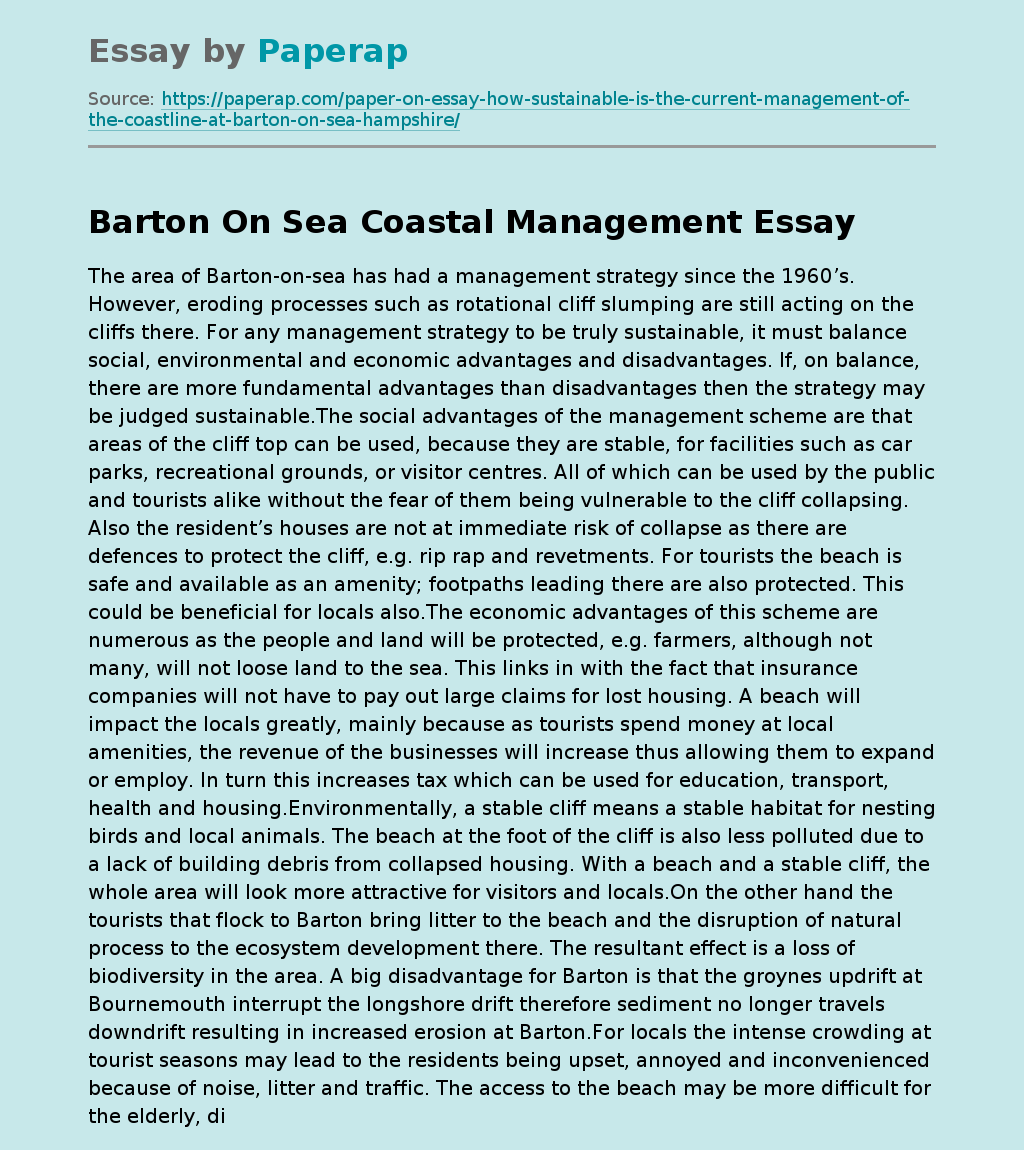Barton On Sea Coastal Management
The following sample essay on Barton On Sea Coastal Management. The area of Barton-on-sea has had a management strategy since the 1960’s. However, eroding processes such as rotational cliff slumping are still acting on the cliffs there. For any management strategy to be truly sustainable, it must balance social, environmental and economic advantages and disadvantages. If, on balance, there are more fundamental advantages than disadvantages then the strategy may be judged sustainable.The social advantages of the management scheme are that areas of the cliff top can be used, because they are stable, for facilities such as car parks, recreational grounds, or visitor centres.
All of which can be used by the public and tourists alike without the fear of them being vulnerable to the cliff collapsing. Also the resident’s houses are not at immediate risk of collapse as there are defences to protect the cliff, e.g. rip rap and revetments.
For tourists the beach is safe and available as an amenity; footpaths leading there are also protected.
This could be beneficial for locals also.The economic advantages of this scheme are numerous as the people and land will be protected, e.g. farmers, although not many, will not loose land to the sea. This links in with the fact that insurance companies will not have to pay out large claims for lost housing. A beach will impact the locals greatly, mainly because as tourists spend money at local amenities, the revenue of the businesses will increase thus allowing them to expand or employ.
In turn this increases tax which can be used for education, transport, health and housing.Environmentally, a stable cliff means a stable habitat for nesting birds and local animals. The beach at the foot of the cliff is also less polluted due to a lack of building debris from collapsed housing.
With a beach and a stable cliff, the whole area will look more attractive for visitors and locals.On the other hand the tourists that flock to Barton bring litter to the beach and the disruption of natural process to the ecosystem development there. The resultant effect is a loss of biodiversity in the area. A big disadvantage for Barton is that the groynes updrift at Bournemouth interrupt the longshore drift therefore sediment no longer travels downdrift resulting in increased erosion at Barton.For locals the intense crowding at tourist seasons may lead to the residents being upset, annoyed and inconvenienced because of noise, litter and traffic. The access to the beach may be more difficult for the elderly, disabled or young children if large sea defences such as revetments or rip-rap are built, this could cause distress to some people.
Economically the maintenance and renewal costs for the coastal defences and overall management are very high linking in with the taxes being raised to pay for the numerous defences Barton has. An increase in taxes will result in the locals having less personal disposable income. Therefore less money is spent in shops and local services so businesses may struggle financially.To conclude the numerous advantages outweigh the relatively small scale disadvantages thus making the management scheme at Barton sustainable. However, the defences at Bournemouth still cause a problem for the coastline at Barton. If the groynes are removed at Bournemouth then the effect on Barton would be great therefore this is the best option for the coastal management strategy at Barton.
Barton On Sea Coastal Management. (2019, Dec 05). Retrieved from https://paperap.com/paper-on-essay-how-sustainable-is-the-current-management-of-the-coastline-at-barton-on-sea-hampshire/

